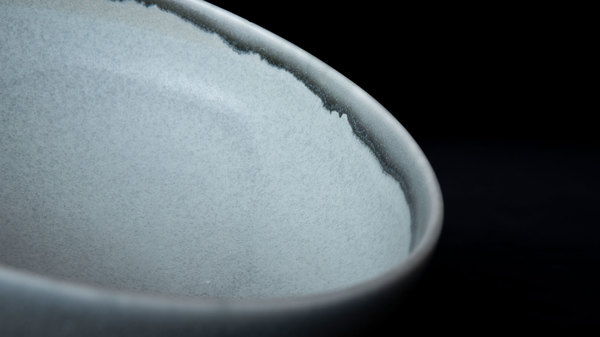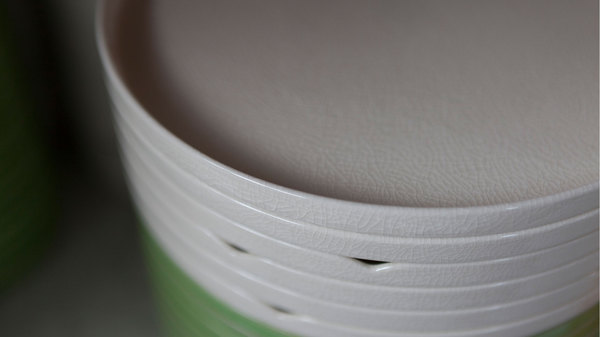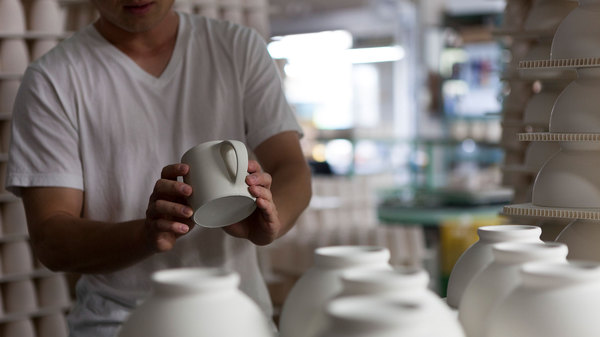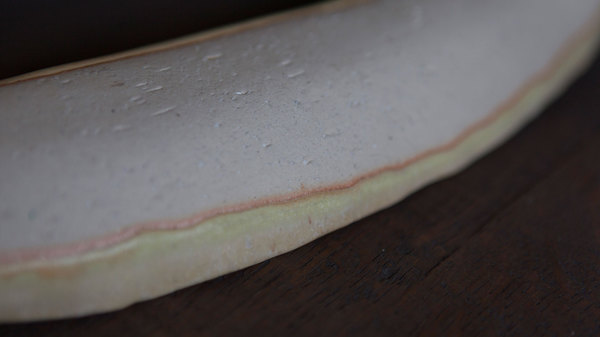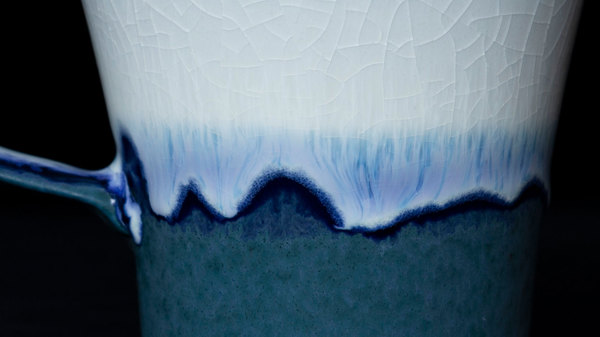


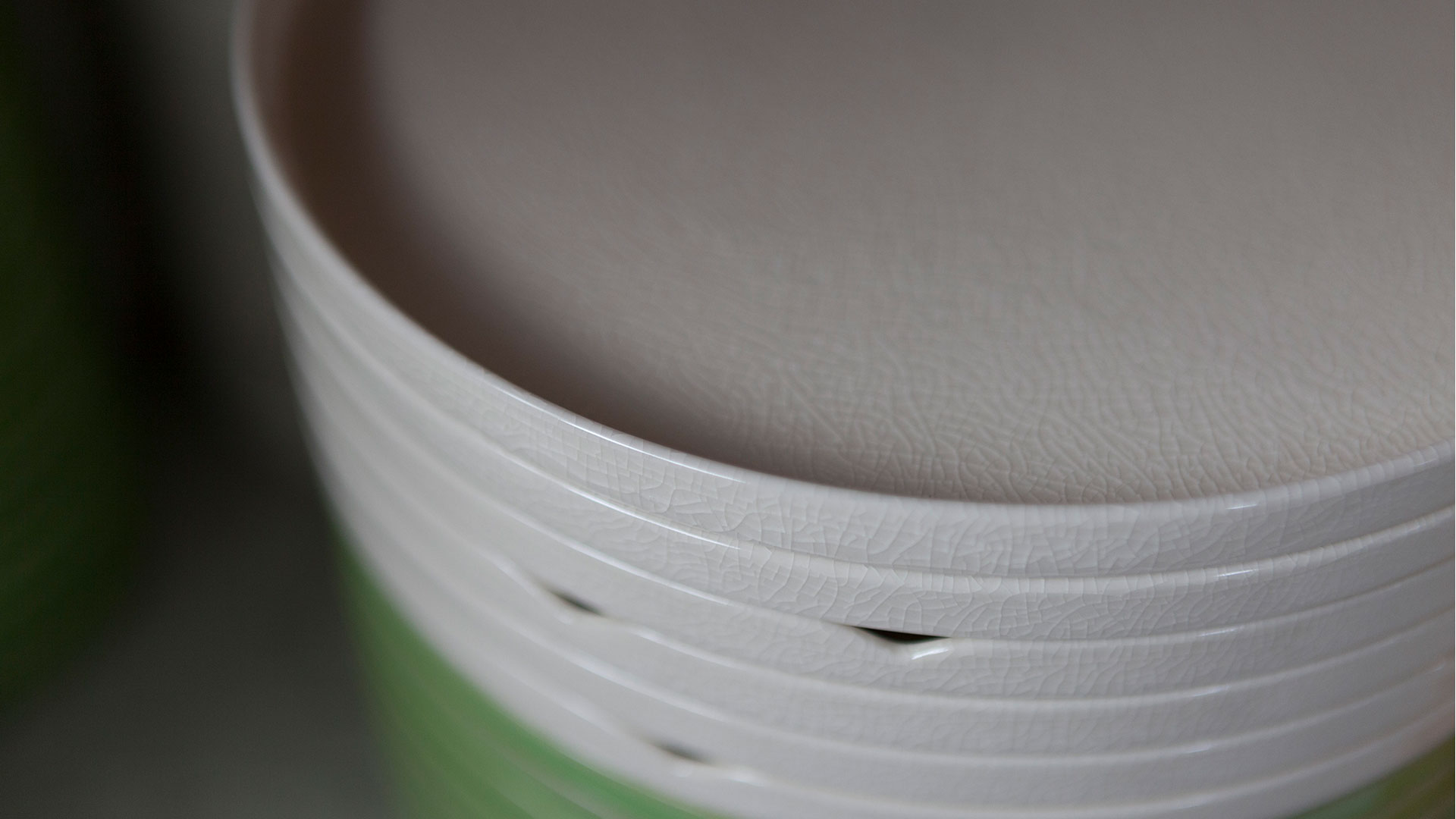
Tableware is alive.
The technique of intentionally creating minute cracks in the glaze surface, known as 'crazing', makes use of the different shrinkage ratios of glass glazes. Crazing occurs not only during firing but continues gradually with use.
Discovering a new line that wasn't there the day before is a reminder that the tableware is alive and growing, helping forge a loving relationship with these pieces, which are a part of our lives.
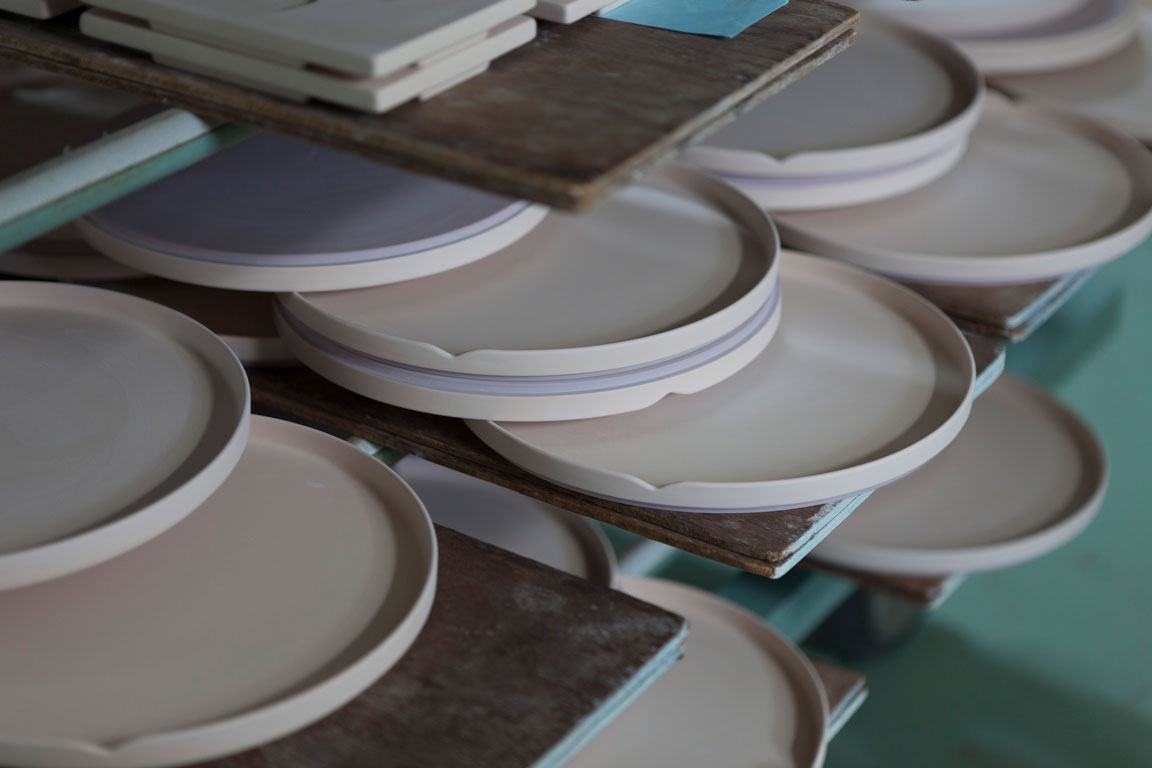
What stands out about Chikudouen is glass glaze. Artisan Takashi Shimakura singlehandedly sees to all glass glazes. The application process begins with checking the consistency of the glaze. Not satisfied with relying on instrument readings, Shimakura always feels the glaze with his bare hands to check the viscosity. This important step controls for the correct thickness of the glaze, which determines what kind of crazing will occur.
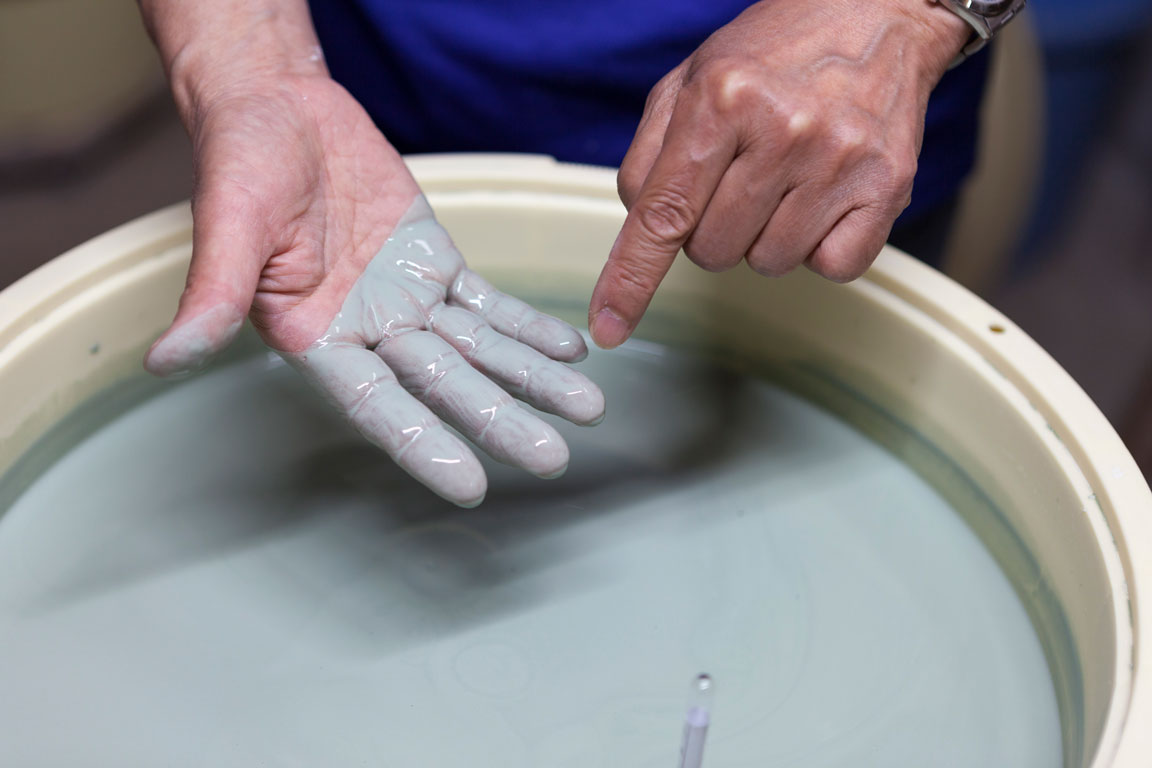
Firing is also a delicate process.
Green glazes in particular have a tendency to affect other colors during the firing process and are thus kept in a separate area of the kiln. The extra space required means fewer pieces can be fired at once.
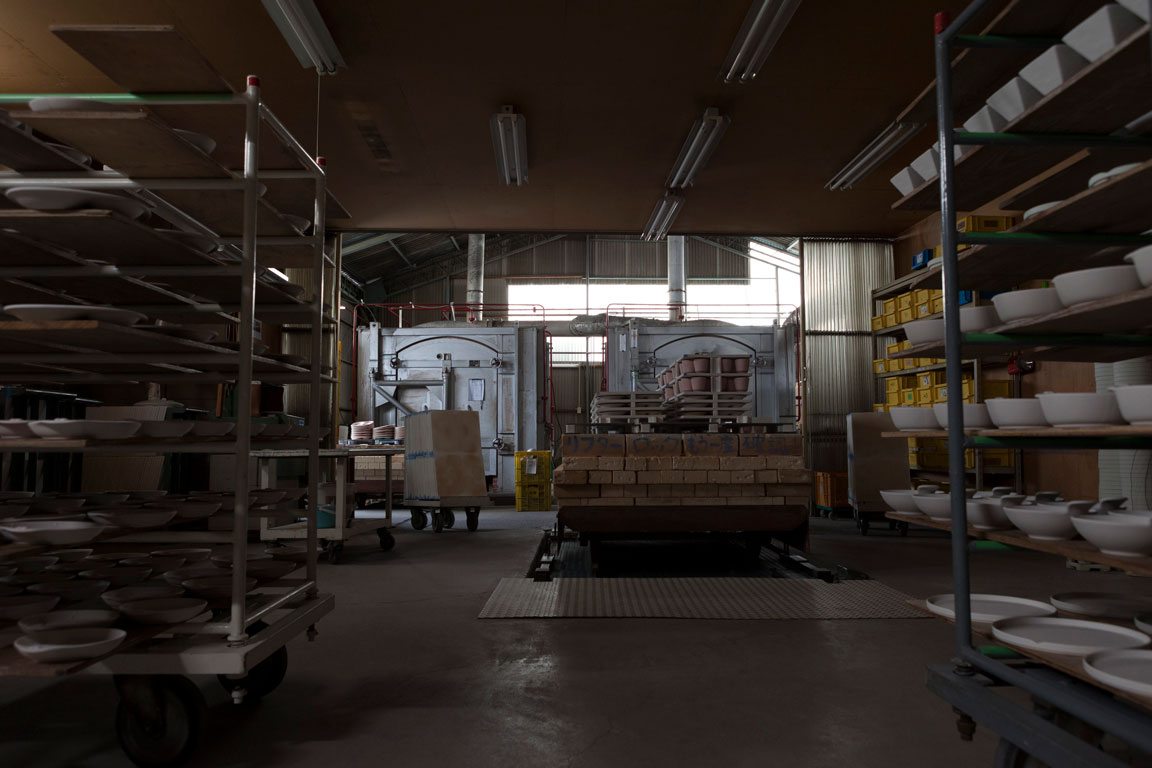
With the HASU series, high precision in both glaze thickness and even-firing is critical for a perfect, stackable fit. Furthermore, the pieces in the HASU series are thinner than typical glass-glazed ceramics, and our artisans say that they must take extra care with the delicate pieces.
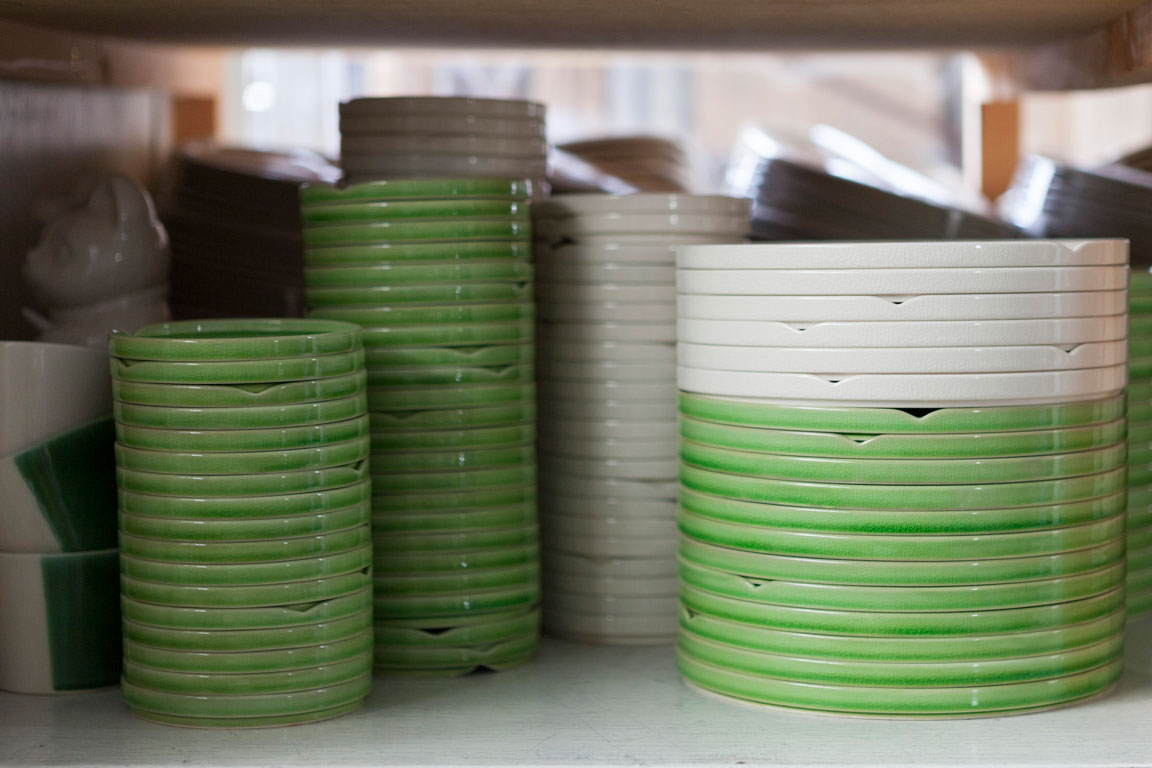
Chikudouen is proud to be one of the few remaining pottery factories keeping the art of glass glaze alive today.
Along with their specialized glaze application techniques, Chikudouen also insists on making all base pottery in-house. The Chikudouen HASU series allows us to deliver the valuable art of giving life to pottery, from Japan to the world.
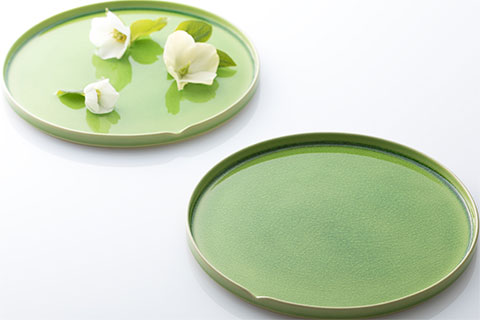
Vibrant, green glaze with leaf vein pattern crackle calls to mind a lotus leaf (hasu). Enrich your table in the fresh feel of a tranquil pond with these HASU plates and bowls.
The notches on the edges of the bowls and plates allow for stacking without having to remove the spoons.
The notches on the upper edge of the plates can be used to rest your cutlery or chopsticks, providing function along with form.

